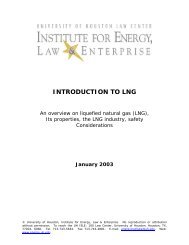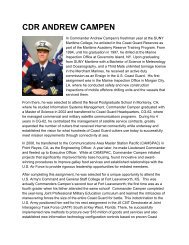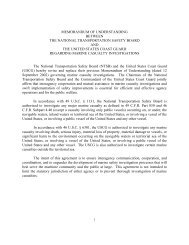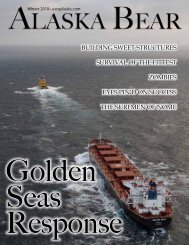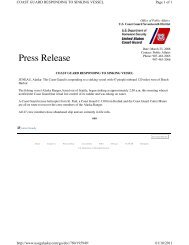marine board report - Off Soundings
marine board report - Off Soundings
marine board report - Off Soundings
Create successful ePaper yourself
Turn your PDF publications into a flip-book with our unique Google optimized e-Paper software.
Figure 12<br />
Photo of SEA POWER (1990)<br />
b. Scallop Boat. Information regarding the vessel’s initial operations is sketchy. In the early<br />
1990s, the vessel was modified to dredge for scallops and home ported in New Bedford,<br />
Massachusetts. There are no known drawings or plans to reflect this modification. Pictures<br />
taken by a <strong>marine</strong> surveyor show heavy doubler plates on the port and star<strong>board</strong> sides and<br />
stern were installed with plug welds, most likely to protect the sideshell when the scallop<br />
dredge banged against those portions of the hull.<br />
c. Catcher-Processor Boat – Second Owner and Operator. In 1991, Dr. Kusum and Dr. D.K.<br />
Stokes (North American Seafoods) purchased the SEA POWER. That year the vessel was<br />
modified to work in the H & G and freeze industry at SEA-FAB Inc., in Pascagoula,<br />
Mississippi. A shelter deck was extended aft from the house on the main deck (above the<br />
waterline) and consumed approximately two thirds of the aft working deck. This new space<br />
was equipped with fish processing equipment. A gantry and net reel was added at the stern<br />
for trawl operations. The existing live fish hold was converted to a cargo hold. The cargo<br />
hold was insulated with a spray-on urethane foam and equipped with a refrigeration system.<br />
A concrete deck was poured to level the deck and serve as insulation from the shaft alley that<br />
runs through the cargo hold. Mr. Bruce Culver, Naval Architect, reviewed the changes and<br />
conducted an inclining experiment on December 11, 1991 once the majority of work was<br />
complete. Mr. Culver issued a stability book to the owner, which incorporated the<br />
processing space as part of the vessel’s watertight envelope. As such, the processing space<br />
was required to be weathertight whenever the vessel was underway. The vessel departed<br />
Pascagoula to work off the Oregon/Washington coast and transited to India for a brief period<br />
to engage in trawling operations. After the failed India excursion, the vessel operated in the<br />
Gulf of Alaska and Bering Sea waters.<br />
Figure 13<br />
Port view of TENACITY (1996)<br />
Note addition of processing space<br />
on main deck.<br />
19




